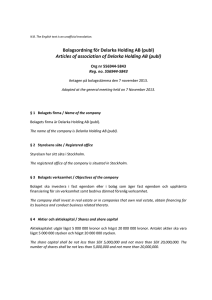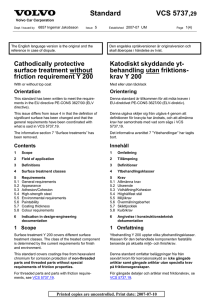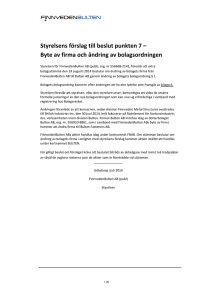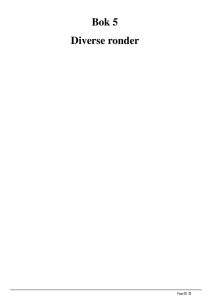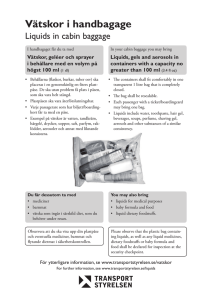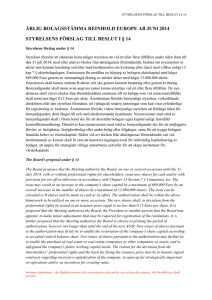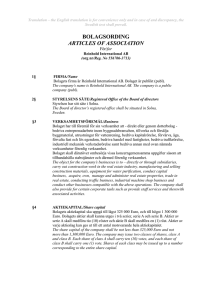Accelererad korrosionsprovning
advertisement
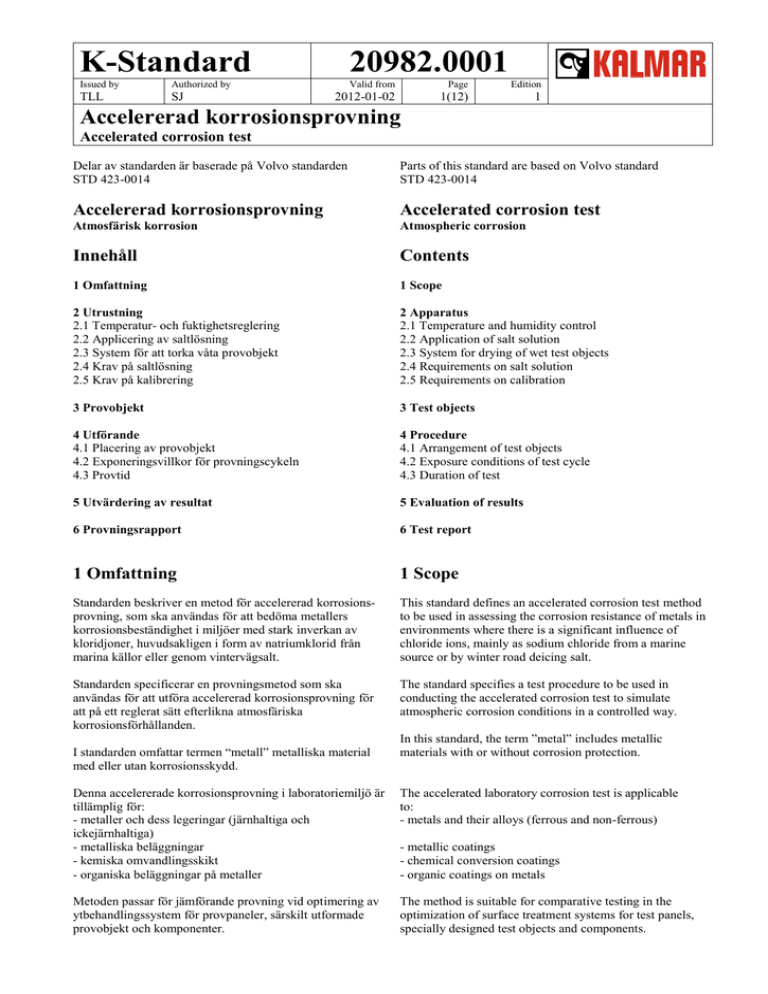
K-Standard 20982.0001 Issued by Authorized by Valid from Page Edition TLL SJ 2012-01-02 1(12) 1 Accelererad korrosionsprovning Accelerated corrosion test Delar av standarden är baserade på Volvo standarden STD 423-0014 Parts of this standard are based on Volvo standard STD 423-0014 Accelererad korrosionsprovning Accelerated corrosion test Atmosfärisk korrosion Atmospheric corrosion Innehåll Contents 1 Omfattning 1 Scope 2 Utrustning 2.1 Temperatur- och fuktighetsreglering 2.2 Applicering av saltlösning 2.3 System för att torka våta provobjekt 2.4 Krav på saltlösning 2.5 Krav på kalibrering 2 Apparatus 2.1 Temperature and humidity control 2.2 Application of salt solution 2.3 System for drying of wet test objects 2.4 Requirements on salt solution 2.5 Requirements on calibration 3 Provobjekt 3 Test objects 4 Utförande 4.1 Placering av provobjekt 4.2 Exponeringsvillkor för provningscykeln 4.3 Provtid 4 Procedure 4.1 Arrangement of test objects 4.2 Exposure conditions of test cycle 4.3 Duration of test 5 Utvärdering av resultat 5 Evaluation of results 6 Provningsrapport 6 Test report 1 Omfattning 1 Scope Standarden beskriver en metod för accelererad korrosionsprovning, som ska användas för att bedöma metallers korrosionsbeständighet i miljöer med stark inverkan av kloridjoner, huvudsakligen i form av natriumklorid från marina källor eller genom vintervägsalt. This standard defines an accelerated corrosion test method to be used in assessing the corrosion resistance of metals in environments where there is a significant influence of chloride ions, mainly as sodium chloride from a marine source or by winter road deicing salt. Standarden specificerar en provningsmetod som ska användas för att utföra accelererad korrosionsprovning för att på ett reglerat sätt efterlikna atmosfäriska korrosionsförhållanden. The standard specifies a test procedure to be used in conducting the accelerated corrosion test to simulate atmospheric corrosion conditions in a controlled way. I standarden omfattar termen “metall” metalliska material med eller utan korrosionsskydd. In this standard, the term ”metal” includes metallic materials with or without corrosion protection. Denna accelererade korrosionsprovning i laboratoriemiljö är tillämplig för: - metaller och dess legeringar (järnhaltiga och ickejärnhaltiga) - metalliska beläggningar - kemiska omvandlingsskikt - organiska beläggningar på metaller The accelerated laboratory corrosion test is applicable to: - metals and their alloys (ferrous and non-ferrous) Metoden passar för jämförande provning vid optimering av ytbehandlingssystem för provpaneler, särskilt utformade provobjekt och komponenter. The method is suitable for comparative testing in the optimization of surface treatment systems for test panels, specially designed test objects and components. - metallic coatings - chemical conversion coatings - organic coatings on metals K-Standard 20982.0001 Issued by Authorized by Valid from Page Edition TLL SJ 2012-01-02 2(12) 1 Accelererad korrosionsprovning Accelerated corrosion test 2 Utrustning 2 Apparatus 2.1 Temperatur- och fuktighetsreglering 2.1 Temperature and humidity control Klimatkammaren ska utformas så att följande provförhållanden ska kunna uppnås och kontrolleras under provningen. The climate chamber shall be designed so that the following test conditions can be obtained, controlled and monitored during the test. Under en period med konstanta klimatförhållanden ska en noggrannhet av ± 3 % RH gälla för medelvärdet i relativ fuktighet, motsvarande ett minimumkrav för temperaturnoggrannheten av, i detta fall, ± 0,8 °C. During a period of constant climate conditions, an accuracy of ± 3 % RH for the mean value in relative humidity shall apply. This corresponds to a minimum temperature accuracy requirement of, in this case, ± 0,8 °C. Klimatkammaren ska vara konstruerad så att den relativa fuktigheten kan ändras i förhållande till tiden, från 95 % RH till 50 % RH inom 2 h. I figur 1 i avsnitt 2.1.1 visas ett exempel på en lämplig konstruktion av en klimatkammare. The climate chamber shall be designed so that the relative humidity may be changed with respect to time, from 95 % RH to 50 % RH within 2 h. In figure 1 in section 2.1.1, an example of a suitable design of a climate chamber is shown. För att uppfylla kraven på noggrannhet för temperatur och fuktighet ska klimatkammaren förses med utrustning som ger en jämnt fördelad effektiv luftcirkulation för att säkerställa att variationen i temperatur och fuktighet i kammaren ligger inom angiven tolerans. Det krävs att kammarens väggar och luckor är tillräckligt isolerade för att undvika överdriven kondensation på dessa ytor. To meet the temperature and humidity accuracy requirements, the climate chamber shall be equipped with an apparatus to provide evenly distributed efficient circulation of air to secure that the temperature and humidity variations in the chamber are within the stated tolerances. Sufficient insulation of the chamber walls and lids is required in order to avoid excessive condensation on these surfaces. Fuktighets- och temperaturnivån i klimatkammaren under en provningscykel ska hållas under fortlöpande bevakning. Fuktighets- och temperaturgivarna bör återspegla klimatförhållandena i själva provningsplanet. The humidity and temperature levels of the climate chamber during a test cycle shall be continuously monitored. The humidity and temperature sensors should reflect the climate conditions in the actual test area. För mätningar av relativ fuktighet ska en hygrometer konstruerad för mätningar vid hög fuktighet användas, t.ex. ett guldspegelinstrument för daggpunktsmätning. För temperaturmätning krävs en motståndstemperaturgivare. For measurements of the relative humidity, use a hygrometer designed for measurements at high humidity levels, e.g. a gold mirror dewpoint meter. For temperature measurements, the use of a resistance thermometer is required. K-Standard 20982.0001 Issued by Authorized by Valid from Page Edition TLL SJ 2012-01-02 3(12) 1 Accelererad korrosionsprovning Accelerated corrosion test 2.1.1 Exempel på utrustning 2.1.1 Example of equipment Fig. 1 Exempel på klimatkammare / Example of climate chamber 1 Provkammare 2 Maskinenhet 3 Provobjektsområde 4 Välisolerade väggar/luckor 5 Luftfördelningsplåt 6 Svängbar rör/skena med spridarmunstycken 7 Luftningsutlopp 8 Avlopp 9 Klimatiseringsenhet (kylning/värmning/luftbefuktning) 10 Våt och torr Pt100-givare (psykrometergivare) 11 Kylmaskin 12 Kärl med saltlösning och trycksättningspump 13 Motor och länkarmar för svängning av rör/ skena 14 Styrenhet 15 Elektronik och reglage 1 Test chamber 2 Machinery unit 3 Test object area 4 Well-insulated walls/lids 5 Air distribution plate 6 Swaying tube/member with spraying nozzles 7 Air-purge outlet 8 Outlet 9 Climatization unit (cooling/heating/humidification) 10 Wet and dry Pt100 sensors (psychrometric sensor) 11 Cooling machine 12 Vessel with salt solution + pressurizing pump 13 Motor and link arms for swaying motion of precipitation tube/member 14 Control unit 15 Electronics and regulatory devices K-Standard 20982.0001 Issued by Authorized by Valid from Page Edition TLL SJ 2012-01-02 4(12) 1 Accelererad korrosionsprovning Accelerated corrosion test 2.2 Applicering av saltlösning 2.2 Application of salt solution Utrustning för spridning av saltlösning ska installeras i klimatkammaren. A spraying device for salt application shall be installed inside the climate chamber. 2.2.1 Utrustning för spridning av finfördelat regn 2.2.1 Spraying device Utrustningen för spridning av finfördelat regn ska klara av att producera en fint fördelad, enhetlig spray av saltlösning över provobjektet med ett flöde motsvarande en nederbörd av 15 mm/h ± 5 mm/h. The spraying device shall be capable of producing a finely distributed, uniform spray of salt solution falling on the test objects with a flow corresponding to a downfall of 15 mm/h ± 5 mm/h. Sprayad saltlösning får ej återanvändas. Sprayed salt solution must not be reused. Utrustningen för spridning av finfördelat regn utgörs företrädesvis av ett antal flatstråledysor monterade i serie på en skena eller ett rör på sådant sätt att spraybilderna delvis överlappar varandra, se figur 2. En fram- och återgående rörelse av röret/skenan måste åstadkommas så att saltlösningen fördelas jämnt över provningsområdet. The spraying device shall preferably be made of a number of flat spraying nozzles mounted in series on a rail or tube in such a way that their spray patterns are partly overlapping, see figure 2. A swaying mode of the tube member must be implemented in order to distribute the salt solution uniformly over the test area. Utrustningen för spridning av finfördelat regn bör bestå av, eller beklädas med, material beständiga mot korrosion från saltlösningen. Plastmaterial rekommenderas. The spraying device should be made of, or lined with, materials resistant to salt solution corrosion. The use of plastics material is recommended. Om dimma bildas under regnfasen måste provkammaren vara försedd med anordning för att evakuera saltdimman direkt efter begjutning. If mist is formed during the rain phase, the test chamber must be equipped with a device for evacuating the salt mist directly after spraying. Denna utblåsning måste starta omedelbart efter det att regnfasen har slutat. Tiden för att dimman ska vara totalt eliminerad får inte överstiga 10 min. This blowing procedure must start immediately after completion of the spray phase, and the mist shall be totally eliminated within a period of 10 min. Om man har problem med att uppåt- och nedåtgående graf inte är rak vid befuktning respektive avfuktning, bör utrustning för tvätt finnas. Utrustningen måste då vara försedd med munstycken som kan roteras runt provkammarens väggar, så att en avtvättning kan göras efter varje regnfas. Should there be a problem with a non-straight upward or downward graph in connection with wetting and dehumidification respectively, equipment for rinsing should be provided. The equipment must then be equipped with nozzles making it possible to clean all the walls of the test chamber after each rain phase. Denna utblåsning får inte ta längre tid än de 10 min som föreskrivits för att eliminera dimma. This blowing procedure must not be longer than the 10 min that has been set for the mist evacuating. Det är viktigt att provobjekten inte blir exponerade för denna vattenbegjutning. It is important not to expose the test objects to this water splashing. Exempel på munstycke: Spraying Systems Uni Jet 800050VP. C/C-montering av munstycken på bärtuben 50-60 cm (om monterade ca 1 m ovanför provobjektet). Example of nozzle type: Spraying Systems Uni Jet 800050VP. C/C mounting of nozzles on the 50-60 cm supporting tube (if fitted approx. 1 m above the test object). K-Standard 20982.0001 Issued by Authorized by Valid from Page Edition TLL SJ 2012-01-02 5(12) 1 Accelererad korrosionsprovning Accelerated corrosion test Exempel på utrustning för spridning av finfördelat regn Example of spraying device Fig. 2 Figur 2 visar en lämplig konstruktion av utrustning för spridning av finfördelat regn. A suitable spraying device design is shown in figure 2. 2.3 System för att torka våta provobjekt 2.3 System for drying of wet test objects Efter att ha vätts genom sprayning ska samtliga provobjekt lufttorkas från överflödig synlig väta för att återuppnå klimatstyrning. Klimatkammaren ska därför utrustas med ett system för torkning i forcerad luftströmning. After having been sprayed until wet, all test objects shall be air dried from excessive visible wetness in order to regain climate control. The climate chamber shall therefore be equipped with a system for drying in a forced airflow. Upptorkning sker företrädesvis genom underkylning och återupphettning av ett invändigt cirkulationsflöde. Alternativt kan torkning ske genom att man låter ett forcerat flöde förvärmd omgivande luft ventilera kammaren. För en klimatkammare med volymen 1- 2 m3 rekommenderas en strömningshastighet av 50-100 l/s. Den forcerade luftströmningen ska ej överskrida 40 °C. Forced drying is preferably arranged by supercoolingand reheating an internal circulating flow. Alternatively, drying may be arranged by letting a forced flow of pre-heated ambient air ventilate the chamber. For a climate chamber of the volume 1-2 m3, an airflow rate of 50-100 l/s is recommended. The forced airflow shall not exceed a temperature of 40 °C. 2.4 Krav på saltlösning 2.4 Requirements on salt solution Provlösning ska ha en koncentration av 1,0 % ± 0,1 % (massprocent). Saltet får maximalt tillåta en mängd av följande föroreningar i natriumkloriden: The test solution shall have a concentration of 1,0 % ± 0,1 % (percent by mass). The salt can allow a maximum amount of the following impurities in the sodium chloride: Koppar 0,001 % Nickel 0,01 % Natriumjodid 0,1 % Copper 0,001 % Nickel 0,01 % Sodium iodide 0,1 % Den totala föroreningshalten räknad på torrt salt får inte överstiga 0,4 massprocent. The total level of contamination counted on dry salt must not exceed 0,4 percent by mass. Den enprocentiga natriumkloridlösningen ska surgöras till en koncentration av 1x10-4 M vätejoner. Detta görs företrädesvis genom tillförsel av svavelsyra, t.ex. 1 ml 0,5 M H2SO4 till 10 l saltlösning, som ger ett pH på 4,2 ± 0,2. The 1 % NaCl solution shall be acidified to a concentration of 1x10-4M hydrogen ions. This is preferably done by a standard addition of sulphuric acid, e.g. 1 ml of 0,5 M H2SO4 to 10 l of salt solution, which yields a pH of 4,2 ± 0,2. Det avsaltade vattnet ska ha en konduktivitet på max 25 μS. The desalinated water shall have a conductivity of max 25 μS. The salt solution must not be reused. Saltlösningen ska inte återanvändas. K-Standard 20982.0001 Issued by Authorized by Valid from Page Edition TLL SJ 2012-01-02 6(12) 1 Accelererad korrosionsprovning Accelerated corrosion test 2.5 Krav på kalibrering 2.5 Requirements on calibration 2.5.1 Kontroll av spridning av finfördelat Regn 2.5.1 Checking the spray phase: Pluviometry Spridningen av det finfördelade regnet ska kontrolleras med den lösning som specificeras i avsnitt 2.4. The pluviometry shall be checked with the solution defined in section 2.4. Använd mätkoppar utan krage eller förse dem med en tratt (diameter max 10 cm). Choose manifolds without collar, or equip them with a funnel (diameter max. 10 cm). Mätkopparnas eller trattarnas diameter är känd. The diameter of the manifolds or the funnels shall be known. Rengör, torka och väg (med en noggrannhet av 10-2 g) mätkopparna. Clean, dry and weigh (to within 10-2 g) these utensils. Placera mätkopparna i provningsplanet så att det är möjligt att utvärdera homogeniteten hos den regnmängd som fallit. Figur 3 visar ett förslag på placering av mätkoppar i en klimatkammare. Place the manifolds in the testing plane so as to be able to evaluate the homogeneity of the fallen rain quantity. In figure 3, a suggested configuration with manifolds inside a climate chamber is shown. Fig 3 Exempel på placering av mätkoppar i klimatkammare på ca 1000 dm3 Example of a configuration with manifolds inside a climate chamber of approx 1000 dm3 Var noggrann med placeringen av mätkopparna om er utrustning skiljer sig från den som beskrivs i figur 3. Take care of the manifold positions if your equipment differs from the one described in figure 3. Konditionera kammaren under minst 1 h vid en temperatur av 35 ºC, aktivera sedan sprayningen och låt den vara på i 30 min. Condition the chamber during 1 h minimum at 35 °C, then launch the spray mode and let it operate for 30 min. K-Standard 20982.0001 Issued by Authorized by Valid from Page Edition TLL SJ 2012-01-02 7(12) 1 Accelererad korrosionsprovning Accelerated corrosion test Omedelbart efter sprayningen (utan efterföljande spolning eller rensning) torka utsidan av mätkopparna och trattarna. Väg dem därefter. Immediately after the end of the spray mode (without subsequent flush phase or rinsing phase), dry the outside of the manifolds and funnels, then weigh them. Notera skillnaden mellan den vikt som då erhålls med den ursprungliga vikten för varje mätkopp respektive tratt och omvandla den till ml/h därefter till mm/h genom att dividera den samlade volymen med mätkoppens respektive trattens uppsamlande yta. Record the difference in mass with respect to the initial mass of the manifold and funnel, and convert it into ml/h, then mm/h, dividing the collected volume by the collecting surface of the manifold or the funnel. Ställ in tryck, flödeshastighet och munstyckenas riktning så att ett regn av 15 ± 5 mm/h (d.v.s. 2 - 3 g kondensat per 30-minuterssprayning) erhålls i alla mätkopparna. Set the pressure, the flow rate and the orientation of the nozzles in order to obtain a pluviometry of 15 ± 5 mm/h (i.e. 2-3 g of condensate per 30-minute spraying) in all the manifolds. 2.5.2 Verifiering av temperaturs- och fuktighetsfaserna 2.5.2 Verification of temperature and humidity phases Detta utförs med mätinstrument för kontroll av temperatur och fuktighet (t.ex. Pt100-givare, guldspegelinstrument, etc.) placerade i mitten av kammaren. This is done using temperature and humidity measuring devices (examples: Pt100 probes, gold mirror dewpointmeter, etc.), placed at the centre of the chamber. Verifiering ska utföras vid följande temperaturer/RH och under den tid som anges: 35 ºC och 40 % RH under 3 h 35 ºC och 80 % RH under 3 h 35 ºC och 95 % RH under 3 h 50 ºC och 40 % RH under 3 h 50 ºC och 80 % RH under 3 h 50 ºC och 95 % RH under 3 h Verification shall be performed at the following temperatures/RH and for the time stated: 35 °C and 40 % RH during 3 h 35 °C and 80 % RH during 3 h 35 °C and 95 % RH during 3 h 50 °C and 40 % RH during 3 h 50 °C and 80 % RH during 3 h 50 °C and 95 % RH during 3 h Den sammanlagda provningstiden ska alltså vara 18 h. i.e. a total duration of 18 h. Efter 2 h stabilisering utförs mätningen under 1 h. Avvikelsen för temperatur ska då vara max 0,8 ºC och för RH max 3 % vid ett mätintervall på 1 min. After 2 h stabilization, measuring shall be performed during 1 h. The deviation for temperature shall then be maximum 0,8 ºC and for RH maximum 3 % at a measuring interval of 1 min. 3 Provobjekt 3 Test objects Antalet provobjekt samt deras typ, form och mått ska väljas enligt specifikationerna för det material eller den produkt som provas. När inget specificerats ska en ömsesidig överenskommelse nås mellan de berörda parterna. The number and type of test objects, their shape, and their dimensions shall be selected according to the specification for the material or product being tested. When this is not specified, these details shall be mutually agreed between the interested parties. För varje serie provobjekt ska följande data registreras: For each series of test objects, data records shall be kept including the following information: a) Specifikation av materialet som ska provas. a) Specification of the material to be tested. b) Om provobjekten utsätts för avsiktlig skada i beläggningen ska skadans form och läge samt dess uppkomst beskrivas. Även skadans orientering under provning ska specificeras. b) If the test objects are subjected to intentional damage in the coating, the shape and the location of the damage shall be described, as well as how the damage was achieved. The orientation of the damage during testing shall also be specified. K-Standard 20982.0001 Issued by Authorized by Valid from Page Edition TLL SJ 2012-01-02 8(12) 1 Accelererad korrosionsprovning Accelerated corrosion test c) Beskrivning av hur provobjektet preparerats, inklusive eventuell rengöring innan provning, samt eventuellt kantskydd. c) Description of the preparation of the test object, including any cleaning applied before testing and any protection given to edges. d) Information om referensmaterial som provobjektet ska jämföras med. d) Information of reference material or materials with which the test object is to be compared. e) Hur provobjektet ska undersökas, och vilka egenskaper som ska bedömas. Se avsnitt 5. e) How the test object is to be examined and which properties are to be assessed, see section 5. 4 Utförande 4 Procedure 4.1 Placering av provobjekt 4.1 Arrangement of test objects Provobjekten ska placeras i skåpet på stativ med provytan uppåt. Det är viktigt i vilken vinkel provobjektens yta exponeras i skåpet. Ytorna hos plana provobjekt ska lämpligen lutas i en vinkel av 15° ± 5° från vertikalplanet. Oregelbundna ytor, t.ex. hela komponenter, ska lutas i en vinkel så nära denna som möjligt. The test objects shall be placed in the cabinet on stands with their test surface facing upwards. The angle at which the surface of the test objects is exposed in the cabinet is important. For flat test objects, the angle at which the test surface is inclined shall preferably be 15° ± 5° from the vertical. In the case of irregular surfaces, for example entire components, this angle shall be maintained as closely as possible. Stativen med provobjekten ska placeras på samma nivå i klimatkammaren. Stativen ska vara tillverkade av inert ickemetalliskt material såsom glas, plast eller lämpligt belagt trä. Om provobjektet måste hängas upp, får materialet som används på inga villkor vara metalliskt, utan ska utgöras av syntetfiber, bomullstråd eller annat inert isoleringsmaterial. The stands with the test objects shall be placed on the same level in the climate chamber. The stands shall be made of inert non-metallic material, such as glass, plastics or suitably coated wood. If it is necessary to suspend the test object, the material used shall on no account be metallic but be of synthetic fibre, cotton thread or other inert insulating material. Stativen ska vara utformade på så sätt att de inte hindrar genomströmningen av luft, och samtidigt möjliggör dränering. The stands shall be designed in such a way that they do not obstruct passing air flow and at the same time enable proper drainage. 4.2 Exponeringsvillkor för provningscykeln 4.2 Exposure conditions of test cycle Den en vecka långa huvudcykeln (fig. 4a) byggs upp av två tolvtimmars delcykler; där den första är en reglerad fuktighetscykel, delcykel 1 (fig. 4b), och den andra innefattar applicering av saltlösning, delcykel 2 (fig. 4c). The one-week main test cycle (fig. 4a) is composed of two twelve-hour sub-cycles; one with controlled humidity cycling, sub-cycle 1 (fig. 4b), the other including salt application, sub-cycle 2 (fig 4c). 4.2.1 Delcykel 1 4.2.1 Sub-cycle 1 Huvudcykeln baseras huvudsakligen på en upprepning av delcykel 1. The main cycle is principally based on a repetition of subcycle 1. Steg 1:1) Konstanta förhållanden vid 35 °C och 95 % RH i 4 h. Step 1:1) Constant conditions at 35 °C and 95 % RH for 4 h. K-Standard 20982.0001 Issued by Authorized by Valid from Page Edition TLL SJ 2012-01-02 9(12) 1 Accelererad korrosionsprovning Accelerated corrosion test Steg 1:2) Temperaturökning från 35 °C till 45 °C samtidigt med en minskning av den relativa fuktigheten från 95 % RH till 50 % RH under 2 h. Steg 1:3) Konstanta förhållanden vid 45 °C och 50 % RH i 4 h. Step 1:2) A temperature increase from 35 °C to 45 °C with a simultaneous linear reduction of the relative humidity from 95 % RH to 50 % RH over a period of 2 h. Step 1:3) Constant conditions at 45 °C and 50 % RH for 4 h. Steg 1:4) Temperaturminskning från 45 °C till 35 °C samtidigt med en linjär ökning av den relativa fuktigheten från 50 % RH till 95 % RH under 2 h. Step 1:4) A temperature decrease from 45 °C to 35 °C with a simultaneous increase of the relative humidity from 50 % RH to 95 % RH over a period of 2 h. 4.2.2 Delcykel 2 4.2.2 Sub-cycle 2 På måndagar och fredagar ersätts delcykel 1 en gång av delcykel 2. On Mondays and Fridays, sub-cycle 1 is once replaced by sub-cycle 2. Steg 2:1) Applicering av saltlösning i 15 min. Step 2:1) Spraying with salt solution for 15 min. Steg 2:2) Konstanta förhållanden vid 35 °C i 1 h 45 min med ett börvärde på den relativa fuktigheten varierande mellan 95 %-99 % RH på ett sådant sätt att provobjekten förblir våta. Step 2:2) Constant conditions at 35 °C for 1 h 45 min with a relative humidity set point at 95 %-99 % RH in such a way that the test objects remain wet. Steps 2:1 and 2:2 are then repeated twice in sequence to give a total period of 6 h. Steg 2:1 och 2:2 upprepas sedan i följd ytterligare två gånger för att uppnå en totaltid av 6 h. Steg 2:3) Torkning av provobjekten vid ett börvärde på den relativa fuktigheten av 50 % RH och vid en temperaturökning från 35 °C till 45 °C under 2 h. Den angivna fuktighetsnivån ska uppnås inom 2 h, varpå provobjekten och kammarens insida ska vara fria från synlig väta. Step 2:3) Drying of the test objects, at a relative humidity set point of 50 % RH and at a temperature increase from 35 °C to 45 °C over a period of 2 h. The specified humidity level shall be reached within 2 h leaving the test objects and chamber interior without visible wetness. Step 2:4) Constant conditions at 45 °C and 50 % RH for 2 h. Steg 2:4) Konstanta förhållanden vid 45 °C och 50 % RH i 2 h. Steg 2:5) Temperaturminskning från 45 °C till 35 °C med samtidig ökning av den relativa fuktigheten från 50 % RH till 95 % RH under 2 h. Fig 4a Step 2:5) A temperature decrease from 45 °C to 35 °C with a simultaneous increase of relative humidity from 50 % RH to 95 % RH over a period of 2 h. K-Standard 20982.0001 Issued by Authorized by Valid from Page Edition TLL SJ 2012-01-02 10(12) 1 Accelererad korrosionsprovning Accelerated corrosion test Fig 4b Fig 4a Komplett enveckas klimatcykel Complete one-week climate cycle Fig 4b Delcykel 1: tolvtimmars program med styrd temperatur- och fuktighetsvariation Sub-cycle 1: 12-hour programme with controlled temperature and humidity ramps Fig 4c Fig 4c Delcykel 2: tolvtimmars program med upprepad applicering av saltlösning (våtfas) följt av torkning och klimatstyrning Sub-cycle 2: 12-hour programme with repeated application of salt solution (wet phase) followed by drying and climate control 4.3 Provtid 4.3 Duration of test Provtiden ska räcka enligt vad som bestämts i de specifikationer som gäller för materialet eller produkten som testas. När inget specificerats ska provtiden bestämmas i samråd mellan beställare och provande avdelning. The test duration shall be determined by the specification covering the material or product being tested. When not specified, the test period shall be agreed by the orderer and the testing department. Rekommenderade provningstider för bedömning av korrosionsbeständighet hos olika material ges nedan. The recommended test duration for assessing the corrosion resistance of different materials is given below. I allmänhet bör ett sexveckorsprov räcka för att klassificera obelagda metaller (legeringar) eller metaller skyddade av tunna omvandlingsskikt eller metallisk, oorganisk eller organisk beläggning. Ett tolvveckorsprov rekommenderas för att klassificera högkvalitativa beläggningssystem. In general, a six-week test should be sufficient to rank any bare metal (alloy) or a metal protected with a thin conversion coating or a metallic, inorganic or organic coating. A twelve-week test is recommended for the ranking of high-quality coating systems. Tabell 1 illustrerar hur de rekommenderade provperioderna enligt denna standard står i förhållande till två olika sorters exponeringsvillkor för kallvalsat kolstål och rent zink (99,9 %). Table 1 illustrates how the recommended periods of testing in accordance with this standard relate to two different kinds of field exposure test conditions in the case of cold-rolled carbon steel and pure zinc (99,9 %). K-Standard 20982.0001 Issued by Authorized by Valid from Page Edition TLL SJ 2012-01-02 11(12) 1 Accelererad korrosionsprovning Accelerated corrosion test Tabell / Table 1 Provat Material Korrosionsgrad i erhållen metallförlust efter provning (μm) Corrosion rate in metal mass loss obtained after test (μm) Material tested Enligt denna standard According to this standard Kallvalsat Kolstål 170-190 (6 veckors exponering) (6 weeks of exposure) Cold-rolled carbon steel 320-380 (12 veckors exponering) (12 weeks of exposure) Rent zink Pure zinc 6-8 (6 weeks of exposure) (6 veckors exponering) 12-16 (12 weeks of exposure) (12 veckors exponering) 5 Utvärdering av resultat 5 Evaluation of results Många olika kriterier för utvärdering av provresultat kan tillämpas för att uppfylla särskilda krav, till exempel: Many different criteria for the evaluation of the test results may be applied to meet particular requirements, for example: a) Provets utseende a) Appearance of the test b) Förändringar i vidhäftningsförmåga b) Change in adhesion properties c) Antal korrosionsfel och deras fördelning, d.v.s. gropar, sprickor, blåsor, etc. Dessa kan bedömas enligt metoder angivna i: K- 20084.0002 för lackerade detaljer (SS-EN ISO 4628-1 --6) K- 20084.0003 för metallbelagda detaljer (SS-EN ISO 10289) c) Number and distribution of corrosion defects, i.e. pits, cracks, blisters, etc. These may be assessed by methods described in: K- 20084.0002 for painted parts (SS-EN ISO 4628-1 --6) K- 20084.0003 for metallic coated parts (SS-EN ISO 10289) d) Tid till de första tecknen på korrosion uppvisas d) The time elapsing until the appearance of the first signs of corrosion e) Förändring av vikt eller groparnas djup e) Change in mass, or pit depth f) Förändring av mekaniska egenskaper f) Change in mechanical properties g) Observationer i ritsen. g) Observations in the scribed line. K-Standard 20982.0001 Issued by Authorized by Valid from Page Edition TLL SJ 2012-01-02 12(12) 1 Accelererad korrosionsprovning Accelerated corrosion test 6 Provningsrapport 6 Test report Provningsrapporten ska innehålla följande information: The test report shall provide the following information: Referens till denna standard Reference to this standard b) Referens till använd provningsutrustning b) Reference to used test equipment c) Beskrivning av provobjektet c) Description of the test object d) Beskrivning av hur provobjektet preparerats d) Description of the preparation of the test object e) Antalet cykler eller provtid e) The number of cycles or the duration of the test f) Eventuella avvikelser från den föreskrivna provningsmetoden f) Any deviations from the prescribed testing method g) Provresultat efter slutgiltig utvärdering av provobjekt enligt kriterier i avsnitt 5 g) Test results after final evaluation of test objects in accordance with criteria under section 5 h) Senaste kalibreringsresultatet bifogas rapport. h) The latest calibration result shall be attached to the test report.
